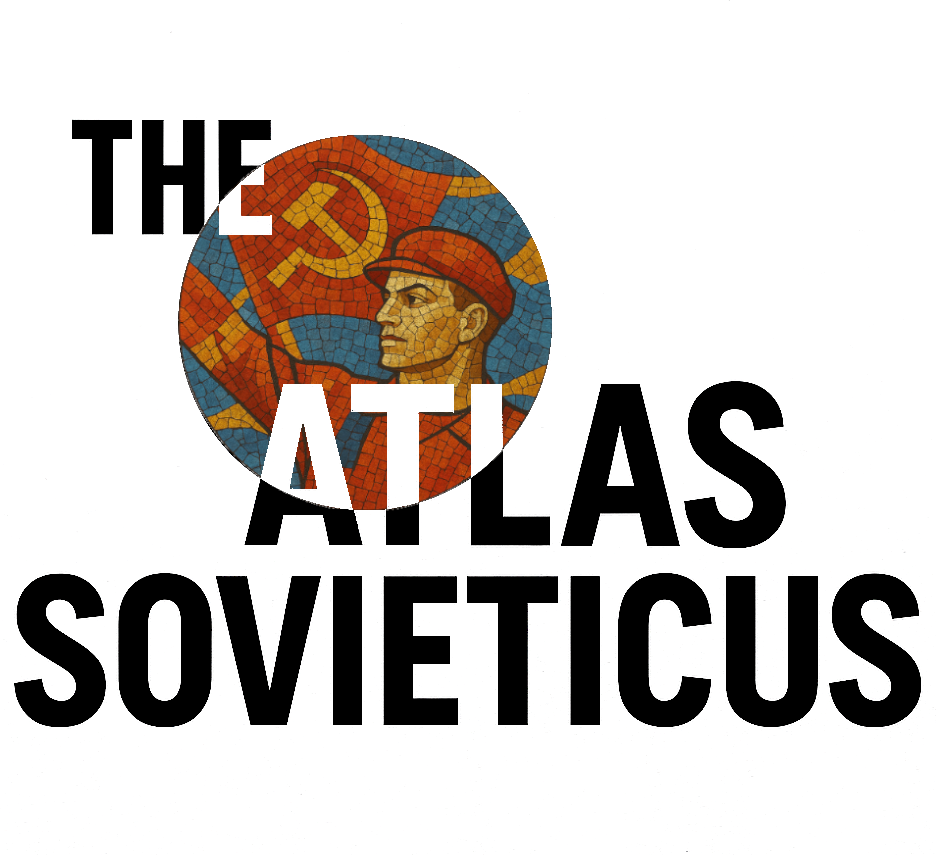
Walking through the galleries of the National Museum of Kazakhstan in Astana, it’s easy to be overwhelmed by the spectrum of styles and stories that define Kazakh art. This time however, I found myself immersed in a rare and focused celebration of a singular artistic voice. The exhibition Mikhail Antonyuk – Artist of His Time, mounted to mark what would have been the artist’s 90th birthday, brought together some of his most compelling works: paintings, sketches, and stained-glass compositions that spanned decades of cultural transformation.
As The Atlas Sovieticus, I came for mosaics, murals, and the remnants of Socialist Realism — but I left captivated by an artist who managed to fuse Cubist abstraction, regional identity, and Soviet ambition into one visual vocabulary.
Mikhail Antonyuk: A Forgotten Modernist?
Born in Ukraine in 1935 and educated in Lviv, Antonyuk moved to Kazakhstan in the early 1960s – during the height of Khrushchev’s Virgin Lands Campaign. He settled in Tselinograd (modern-day Astana), where he would not only become a pillar of the local art scene but also help shape the aesthetic of public space through monumental works across the city and region.
His wide-ranging repertoire encompassed stained glass, mosaic, encaustic accretion technique, lithography, mixed media, and photography in addition to collaborative works with various Soviet artists. In 1993, shortly before his death, he was awarded the title of Honored Artist of Kazakhstan, recognizing a career that had quietly but profoundly transformed the cultural face of the republic.

What struck me most about Antonyuk’s work was how unapologetically modernist it felt, despite operating under the umbrella of state-sanctioned art. Think fractured planes of color, near-geometric renderings of yurts, folklore, and Soviet progress — all reimagined through sharp lines and stained-glass-like palettes. His art was political without propaganda, regional without cliché.


The Exhibition: M. Antonyuk – Artist of his Time
Held at the National Museum of Kazakhstan in Astana, the exhibition was far more than a chronological retrospective of his art. It was a curated exploration of Antonyuk’s visual language, a celebration of his role not just as a Soviet painter and monumentalist, but as a modernist thinker deeply rooted in the Kazakh context.
The works on display spanned small and large paintings, preparatory sketches, black-and-white photographs and glass-based compositions. Many carried familiar themes – nomadic life, working-class heroes, and folkloric symbols —but were rendered in ways that felt more aligned with Malevich or Léger than with conventional Socialist Realism.
One particularly memorable canvas featured a stylized Yurt interior, fractured into crystalline shapes, a fusion of Cubism and Kazakh ornament. Another, “Earth and Space”, merged the themes of the Virgin Lands (Tselina) and space exploration through dynamic geometric forms and luminous color fields, symbolizing humanity’s conquest of both the terrestrial and the cosmic frontiers.

With this focused, reverent presentation, the exhibition reintroduced Antonyuk not as a figure from the margins, but as a central force in the visual identity of Soviet-era Kazakhstan. Visitors weren’t just seeing a set of works — they were stepping into a worldview of form, folklore, and filtered light.
Antonyuk’s Legacy in the Urban Fabric
While this was a museum show, Antonyuk’s real canvas was the city itself. For decades, he decorated Kazakhstan’s urban and institutional spaces with monumental mosaics, stained glass, and decorative panels. Even today, some of these works remain in situ, though many are threatened by weathering or renovation.


As The Atlas Sovieticus, this is precisely the kind of legacy I aim to document: artists like Antonyuk who told ideological, regional, and deeply personal stories through public art that was meant to be permanent, yet often forgotten.
Final Thoughts
The National Museum’s exhibition is a timely reminder of how layered Soviet art can be — especially when viewed through the lens of Kazakhstan’s post-independence identity. For me, Antonyuk doesn’t just deserve a place in the gallery; he deserves a spotlight in the cultural memory of the entire region.
If you’re in Astana, go. If you’re a hunter of Soviet murals and modernist legacies – put Mikhail Antonyuk on your list.


Practical Information
The National Museum of the Republic of Kazakhstan, is located at 54 Tauelsizdik Avenue in Astana. The museum is open from Tuesday to Sunday, between 10:00 AM and 6:00 PM. It is closed every last Tuesday of the month for cleaning. Entry tickets are reasonably priced, with general admission being only 700 KZT (less than 1.5 usd/eur), and reduced rates are available for students, schoolchildren, and seniors.
As the largest museum in Central Asia, the National Museum offers a wide range of permanent exhibitions, from ancient and medieval history to Soviet-era artifacts, ethnography, and contemporary art. Plan at least one to two hours for a visit — more if you want to take in its full scope at a slower pace. Photography is generally allowed, though some temporary exhibitions may have restrictions.
For more information, you can visit the museum’s official website at nmrk.kz or call +7 7172 91 90 35.
Special thanks to Yaroslav Antonyuk, son of the artist and curator of the exhibition, for his generosity in sharing insights into his father’s work. In addition to the main gallery, Yaroslav preserves a private collection of rarely seen pieces housed in a backroom adjacent to the exhibition, offering further insight into lesser-known phases. I am also grateful to Lavinia Hoyos, whose thoughtful introduction made our meeting possible.









Leave a Reply